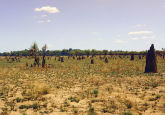The not so a-maize-ing effects of corn

The health and environmental costs of corn production have been found to be greater than the market price in some regions of the USA.
A multi-departmental team from the University of Minnesota (UMN; MN, USA) have estimated that the environmental impact of corn production can lead to 4,300 premature deaths a year in the United States. With an average health cost of $3.07 per bushel, 62% of the $4.95 per bushel market price, the total cost of damages adds up to $39 billion per year.
The health damage per bushel of corn was found to differ between regions, with some of the eastern regions of the corn belt having a greater cost of damage than the market price of the corn produced.
“The deaths caused per bushel in western corn belt states such as Minnesota, Iowa, and Nebraska tend to be lower than in eastern corn belt states such as Illinois, Indiana, and Ohio,” commented lead researcher Jason Hill (UMN).
“Farmers can greatly improve the environmental profile of their corn by using precision agriculture tools and switching to fertilizers that have lower ammonia emissions.”
Nitrogen fertilizer use has led to increased concentrations of fine particulate matter (PM2.5) in the atmosphere, a side effect of the PM2.5 precursor ammonia. As well as health costs, the study found that the environmental effect of reduced air quality can cost $0.38 per bushel of corn, with a total cost of climate change damage equaling $4.9 billion.
“It’s important for farmers to have this information so that they can implement practices that reduce the environmental impact of the crops they grow,” explained Hill; “Farmers can greatly improve the environmental profile of their corn by using precision agriculture tools and switching to fertilizers that have lower ammonia emissions.”
In their paper, recently published in Nature Sustainability, the researchers propose further beneficial strategic interventions for improving future corn production; reduced fertilizer use, improved nitrogen use efficiency and changing the areas where the corn is grown may all contribute to improving the cost to benefit ratio.
“Not only are ammonia emissions from fertilizer damaging to human health, they are also a waste of money for farmers because they are not getting the benefit of the nitrogen that they’re paying for,” Hill concluded. “The number of deaths related to corn production could be reduced through these key tactics.”





